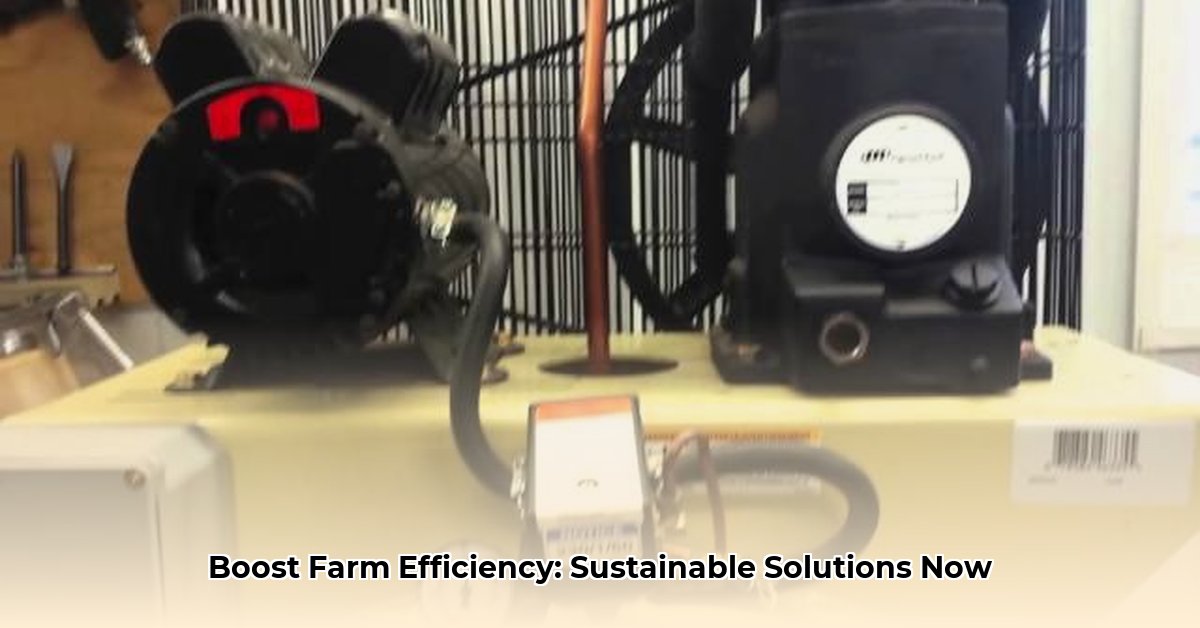
Ingersoll Rand Compressors: A Powerful Tool for Sustainable Farming
Boosting farm productivity while minimizing environmental impact is crucial. High-pressure air compressors are essential for many farm operations, and Ingersoll Rand compressors, readily available at Tractor Supply, offer a robust option. However, careful consideration is needed to ensure they are the right fit for your specific needs and contribute to sustainable agricultural practices. This article explores the benefits, challenges, and practical steps for integrating Ingersoll Rand compressors into your farm sustainably. For more information on Ingersoll Rand compressors at Tractor Supply, check out this helpful resource: Tractor Supply Compressors.
Assessing the Suitability of Ingersoll Rand Compressors for Your Farm
Ingersoll Rand manufactures durable, high-performance air compressors ideal for demanding farm tasks. Their availability at Tractor Supply provides easy access. However, some models, such as the 2340L5, require a substantial 460V, 3-phase power supply – a significant consideration for many farms. Before purchasing, meticulously assess your farm's electrical capacity. Upgrading your electrical system adds substantial cost and complexity, requiring careful planning.
While these compressors offer long-term reliability, the initial investment is significant. A thorough cost-benefit analysis is crucial. How will increased efficiency impact labor costs and time savings? Will these gains outweigh increased energy expenses? Detailed information on energy use (e.g., kilowatt-hours per cubic meter of compressed air) is often scarce, making comprehensive analysis challenging. Prioritize obtaining this data before committing to a purchase.
How Compressed Air Enhances Farm Operations
Ingersoll Rand compressors offer versatility across various farm tasks:
- Tire Inflation: Efficiently inflate tires on tractors and other equipment, minimizing downtime.
- Cleaning: Remove dust and debris from storage facilities and equipment, improving hygiene and pest control.
- Power Tool Operation: Run pneumatic tools for maintenance and repairs, boosting efficiency.
- Spray System Power: Drive sprayers for applying pesticides, herbicides, or fertilizers, potentially enhancing application precision and reducing waste.
These applications translate to substantial time and labor savings. But remember to consider the broader context before investing. Is the potential for increased efficiency enough to justify the cost and environmental impact?
Sustainability Considerations: Environmental and Economic Impacts
While beneficial, Ingersoll Rand compressors necessitate careful consideration of their energy consumption and overall environmental impact. Running costs, including electricity and maintenance, must be factored into the total cost of ownership. The entire lifecycle of these machines—from manufacturing to disposal—contributes to their environmental footprint. Ideally, a comprehensive life cycle assessment would be conducted before making a purchase decision.
Noise pollution is another factor. Powerful compressors generate noise that can negatively impact wildlife and the farm environment. Mitigation strategies, such as strategic placement and soundproofing, should be implemented.
Actionable Steps for Sustainable Integration
Different stakeholders play crucial roles in promoting the sustainable use of Ingersoll Rand compressors:
| Stakeholder | Short-Term Actions | Long-Term Actions |
|---|---|---|
| Farmers | Assess return on investment (ROI); explore leasing options. | Invest in renewable energy (solar, wind) to power compressors; adopt energy conservation practices; consider quieter models. |
| Equipment Suppliers | Offer flexible financing and maintenance packages; promote energy-efficient models. | Develop and market more energy-efficient compressors; advocate for better energy-saving technology standards. |
| Policy Makers | Introduce energy-efficiency incentives for farm equipment. | Fund research into sustainable air compression technologies; support policies promoting cleaner energy transitions. |
Managing Risks Associated with Compressor Use
Potential risks and their mitigation strategies are vital to consider:
| Risk Factor | Likelihood | Impact | Mitigation Strategy |
|---|---|---|---|
| High Initial Cost | High | High | Explore financing; consider used/refurbished units; prioritize needs. |
| Energy Consumption | Medium | Medium | Optimize usage; invest in renewable energy; choose energy-efficient models. |
| Maintenance Costs | Medium | Medium | Secure preventative maintenance contracts; choose robust models. |
| Infrastructure Issues | High (for 460V) | Medium | Thoroughly assess power needs; consider alternative power; upgrade if necessary. |
| Environmental Impact | Low | Medium | Prioritize quieter models; choose models with lower lifecycle environmental impact. |
Reducing Energy Consumption: Practical Steps for Sustainable Farming
Key Takeaways:
- Modern compressors offer significant energy savings over older models.
- Regular maintenance is crucial for optimal energy efficiency.
- Variable speed drives (VSDs) drastically reduce energy consumption.
- Investing in energy-efficient technologies offers both short-term and long-term cost benefits.
Here's how to minimize the energy footprint of your Ingersoll Rand compressor:
Regular Maintenance: Regular oil changes, filter replacements, and leak checks are essential for optimal efficiency – a small leak can significantly increase energy consumption.
Variable Speed Drives (VSDs): VSDs allow the compressor to adjust speed based on demand, reducing wasted energy. This is a highly impactful upgrade.
Optimize Air Pressure: Use the lowest pressure necessary to perform the task. This seemingly small change can create significant energy savings over time.
Upgrade to Energy-Efficient Models: Replacing an outdated compressor with a high-efficiency model can be a worthwhile long-term investment. Newer models often incorporate technologies for maximum efficiency.
Improve System Design: Identify and repair air leaks in your system. Insulating air lines can further minimize energy loss. A well-designed system minimizes waste.
Sustainable farming requires careful consideration of equipment choices. By analyzing both economic and environmental aspects and implementing these practical strategies, you can make an informed decision on whether Ingersoll Rand compressors are a sustainable addition to your farm's operations. Continuous learning and adaptation are essential for sustainable agriculture.